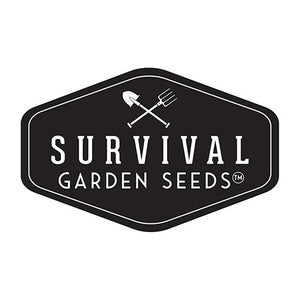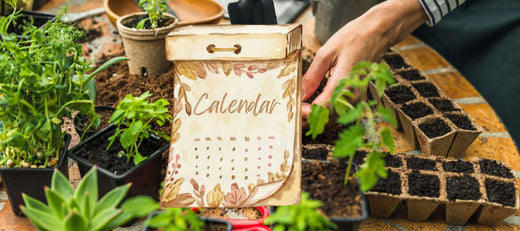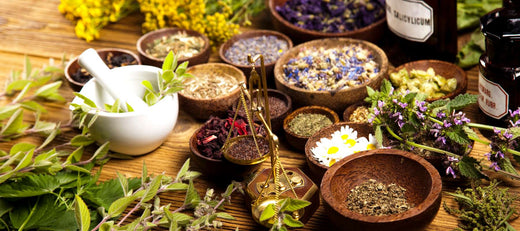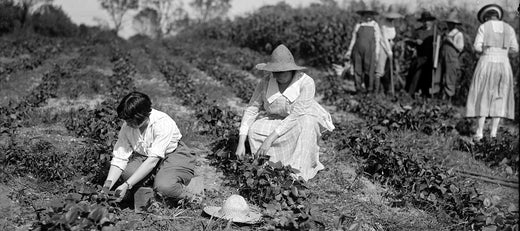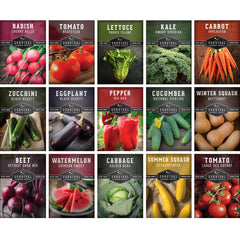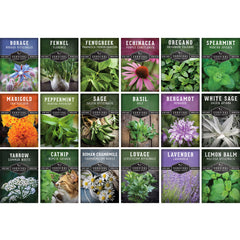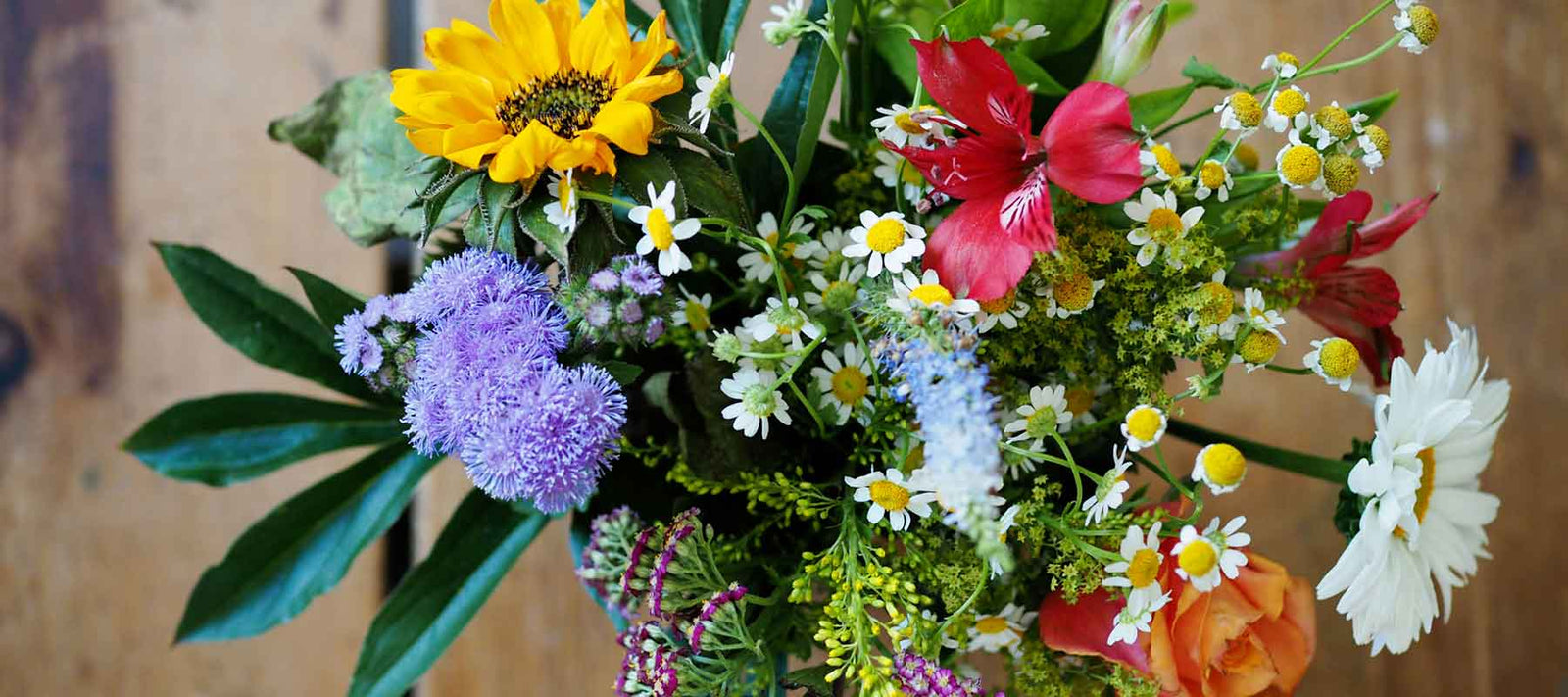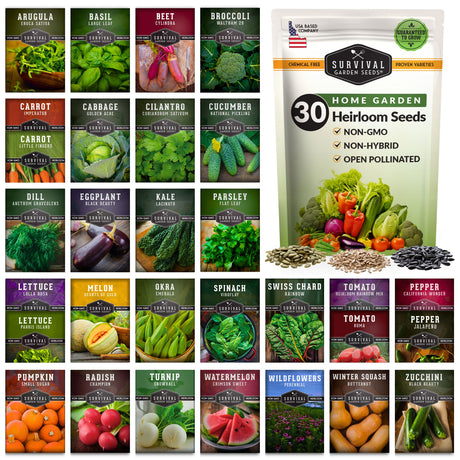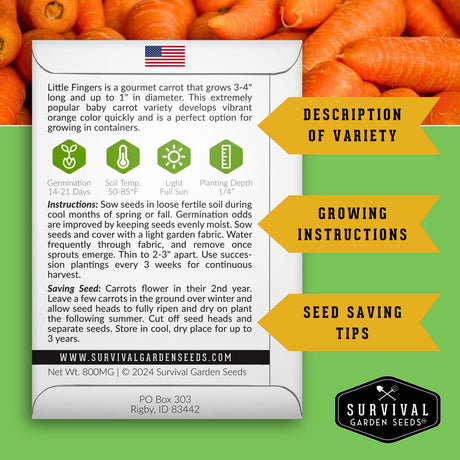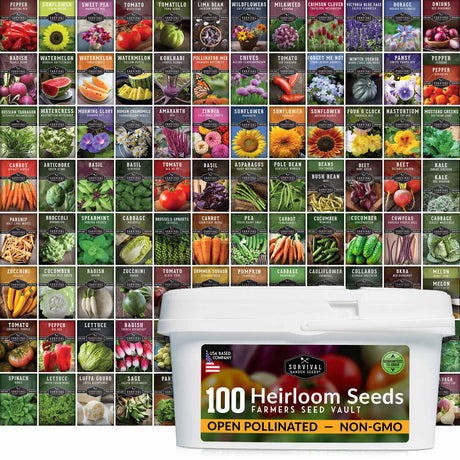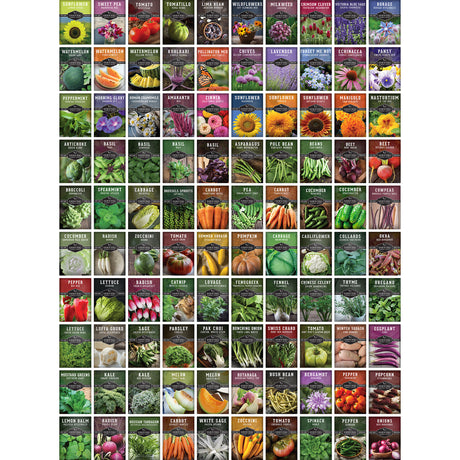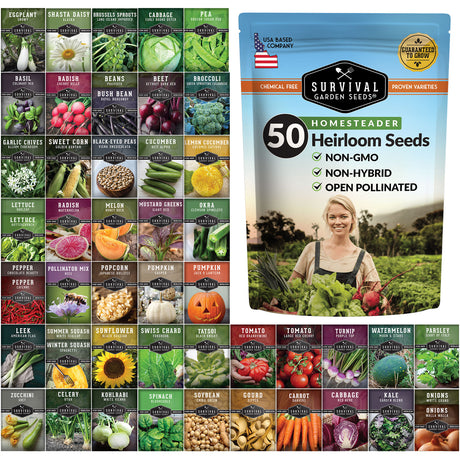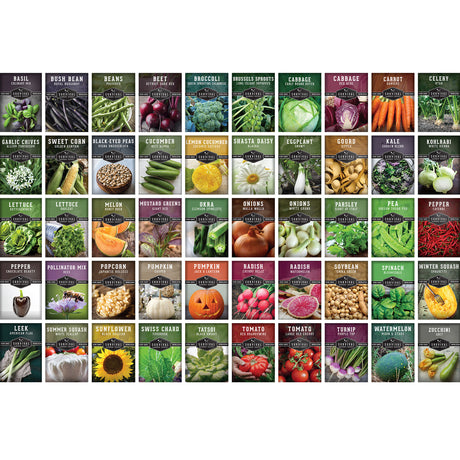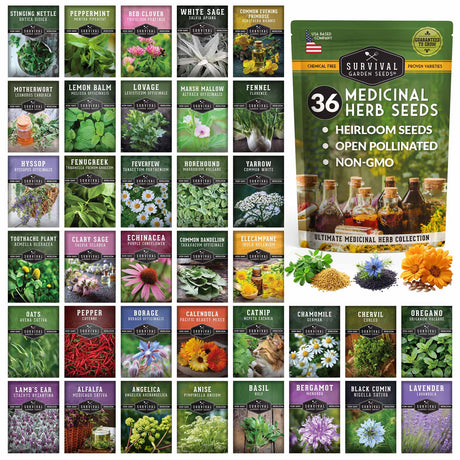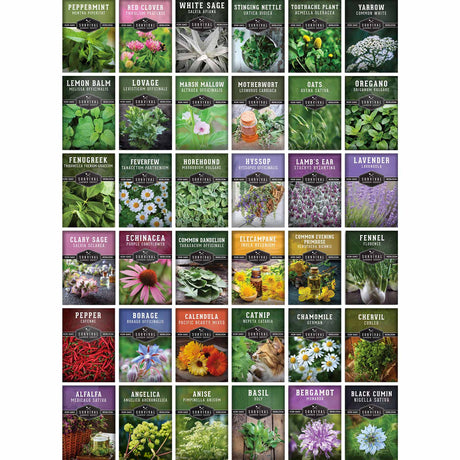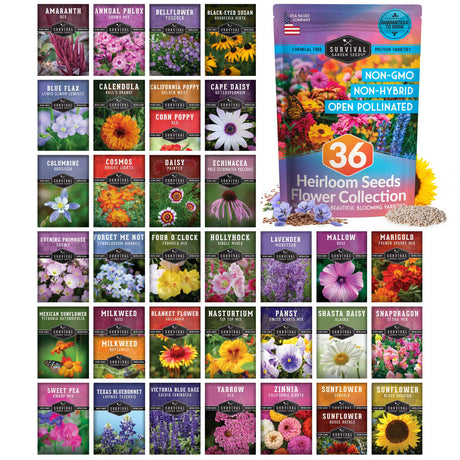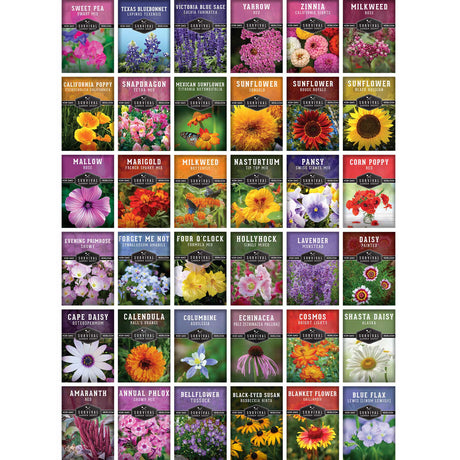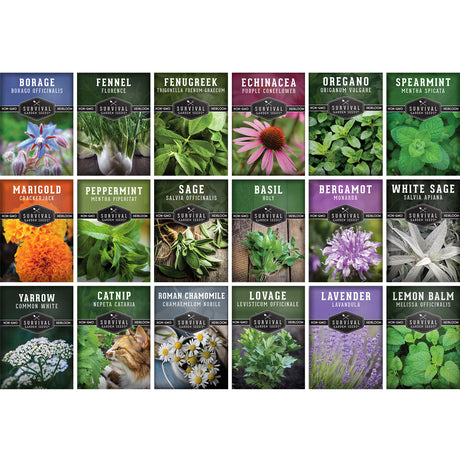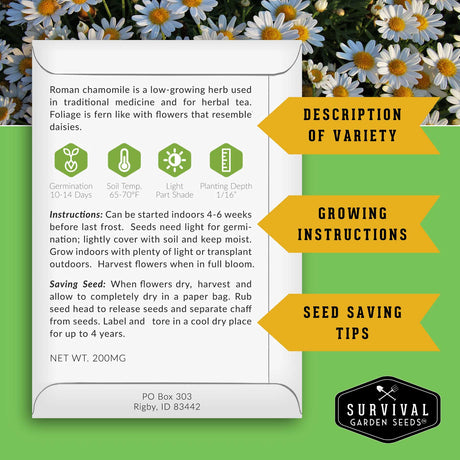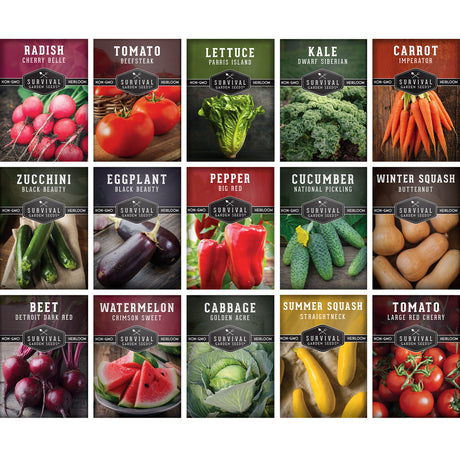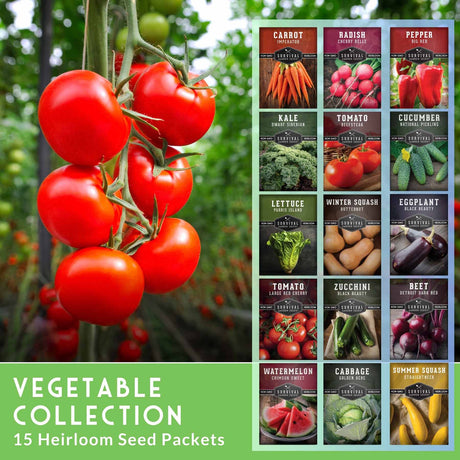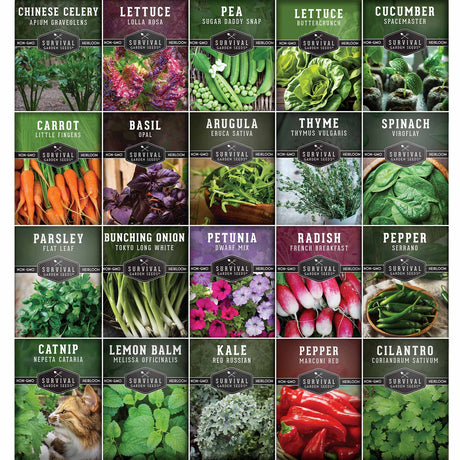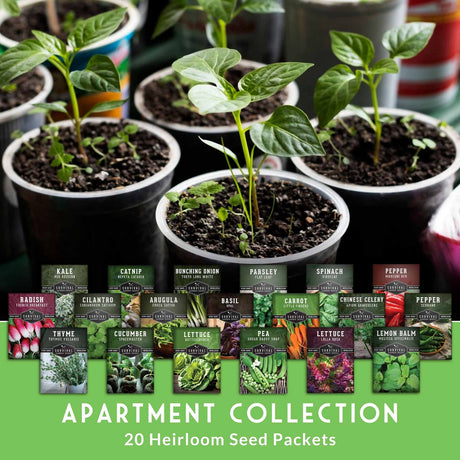Wildflower bouquets are stunning displays of nature’s beauty, and when you grow your own flowers from seed, the possibilities are endless—so let your inner artist go wild! Your vibrant, colorful garden can also be highly practical. The wildflowers in your homegrown bouquet can do double duty as medicinal herbs, pollinator magnets, honeybee food, and natural solutions for erosion control and soil health. If you’re looking for a place to start, our Functional Flower Garden Kit includes 36 carefully curated varieties that balance practical benefits with long-lasting beauty. Let’s dig into how to create a wildflower garden that is as functional as it is charming.
Wildflowers Perfect for Long-Lasting Bouquets

When looking for wildflowers that work equally well in bouquets or the garden setting, consider their value as a cut flower. Long-lasting blooms, pleasant fragrance, and sturdy stems are all important factors. Here are some flowers that will brighten your garden and bouquet.
- Daisies: Simple and unassuming, these flowers are classic and versatile favorites.
- Poppies & Cosmos: Delicate looking but tough, these wildflowers add vibrant charm and elegance.
- Sunflowers: Striking and bold, these popular flowers come in so many options that there’s sure to be a choice you love.
- Zinnias & Snapdragons: These beginner-friendly flowers are easy to grow and add colorful blooms and visual contrast.
Herbs and Wildflowers with Dual Purposes

Many wildflowers do more than just brighten your space; they earn their keep by working to improve the health and function of your garden. Wildflower strips along the edge of your garden can serve as natural erosion control, especially in sloped or exposed areas. These borders of wildflowers also act as a corridor for pollinators. This dual-purpose beauty strengthens your garden’s overall health by boosting pollination, improving soil quality, and aiding pest control.
As you plan your wildflower garden, consider the many benefits different flowers can provide:
- Companion Plants: Marigold and Nasturtium are must-have companions in the garden that help repel pests, attract pollinators, and improve garden productivity.
- Pollinator Magnets: Flowers like Milkweed, a host plant for Monarch butterflies, and Bergamot (a.k.a. Bee Balm) are excellent for attracting beneficial insects. This additional biodiversity will help your garden thrive.
- Erosion Control & Soil Health: With their deep roots and resilience, wildflowers like Black-Eyed Susan, Yarrow, and Blanketflower are fantastic for holding soil together and improving soil health, even in tough growing conditions. They’re perfect for garden borders or difficult areas that need some extra support.
- Medicinal Herbs: Wildflowers can also serve as natural remedies. Gorgeous herbs like Lavender, Calendula, Echinacea (Purple Coneflower), and Chamomile are essentials for any herbalist to grow.
- Edible Flowers: Amaranth is so beautiful when in bloom that it’s hard to narrow it down to one category.
How to Create the Perfect Wildflower Bouquet

Once your plants start to bloom, you’ll be ready to create your own wildflower bouquets. These cut flower arrangements are easy to build, but here are some ideas to get you started and tips for arranging your wildflower bouquets.
Choose a Base: Start with taller flowers like Sunflowers, Daisies, or Zinnias for the foundation of your cut flower arrangement. These flowers add height and draw the eye.
Add Texture: Feathery greens like Yarrow or Lamb’s Ear add visual interest and soften the wildflower bouquet’s overall look.
Highlight with Color: Brighten the bouquet with vibrant pops of color. Poppies, Marigolds, Zinnias, and Snapdragon are bold and stunning.
Finish with Fragrance: Don’t forget to add a pleasing scent. Sprigs of Lavender or Bee Balm smell wonderful and round out the sensory experience.
Planting & Harvesting Wildflowers for Cut Flowers & More
Have fun with your seed selecting, considering all the angles to create a garden design that’s both beautiful and practical. Pair wildflowers with complementary colors and textures for beauty in the garden and indoor arrangements. To keep both your bouquets and garden productive, practice sustainable harvesting. Avoid cutting all the flowers at once, and instead, pick only what you need, leaving plenty of blooms to continue growing. This allows you to enjoy a longer growing season and also will encourage bushy, healthy growth in your wildflower garden.
A wildflower garden can be a space of joy, beauty, and practicality. Flowers serve essential roles in soil health, pollinator support, and erosion control. By cultivating a vibrant wildflower garden, you’ll be able to enjoy homegrown flower bouquets while creating a thriving ecosystem that benefits your garden, pollinators, and the planet. Most of all, it’s a lot of fun! Start a future wildflower garden today by exploring our open-pollinated, heirloom wildflower seeds.

